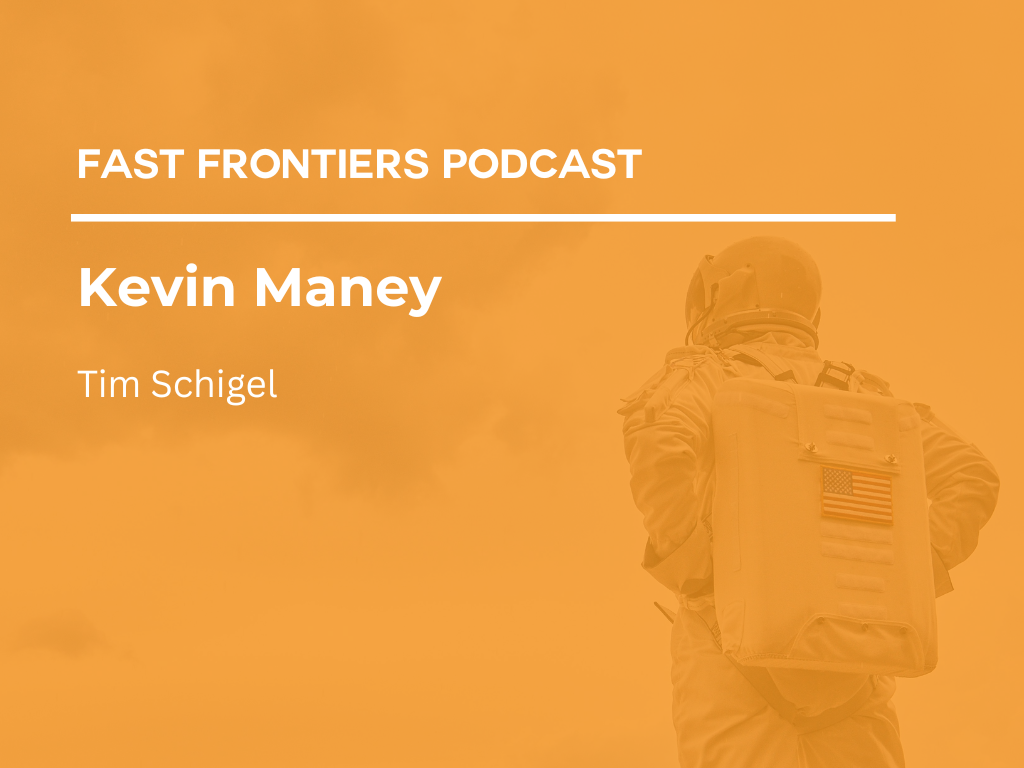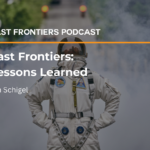You could definitely say our recent podcast guest, Kevin Maney, wears many hats. He is a journalist (having been a contributor to Newsweek, Fortune, The Atlantic, Fast Company, Strategy and Business, Harvard Business Review, CNN, and ABC News, among others), a prolific author, and co-founder of Category Design Advisors. His most recent book, which he co-authored, came out in June 2020 and is called UnHealthcare: A Manifesto for Health Assurance. He’s also co-written a book called Unscaled: How AI and a New Generation of Upstarts Are Creating the Economy of the Future.
But the reason I was especially excited to speak with Kevin was to get the chance to discuss his book called Play Bigger: How Pirates, Dreamers, and Innovators Create and Dominate Markets, which has influenced many people and helped countless entrepreneurs excel.
When asked about the original inspiration behind Play Bigger, Kevin explained how he and his other three co-writers—a trio of Silicon Valley veterans—had gotten together to unpack (and address) the current state of the industry, where everything was centered around the idea of basic truism.
The way Kevin sees it, in digital markets, there quickly becomes a winner takes all scenario in most categories, only to result in markets dominated 80% by one company. According to Kevin, if this scenario is true, that means that if you’re starting a company or you have an older company, if you’re in somebody else’s category, then you’re scraping around for some of that other remaining 20%, and that’s the best you’re ever going to do.
Kevin asked the same question we are all thinking after hearing that—“why would you do that?”—before offering an alternative via his book. He explained the book’s basic premise: “Instead, go through a thought process and kind of a methodology to think about how can you find and define—and then ultimately own—a category of your own.”
Calling this a sort of “reverse engineering,” Kevin clarifies, “[You can say] well, okay, what kind of thought processes do you have to go through to really get to where’s the new category that we could go after, and how do we own it for ourselves?”
Ultimately, what this phenomenal book ended up being is a methodology that Kevin calls “category design” for doing exactly that: “Thinking through this idea of how to find, define, and ultimately own a category of your own. And it turns out that it’s just a really great way for a company to think about its strategy.”
Kevin and I talked a lot about strategy as well. In my opinion, as a VC, if your business plan doesn’t show you able to go public within 6 to 10 years, then you’re missing something. Kevin spoke about honing the art of perfect timing, and what what he calls a “bake time” for software. Put simply: there’s a certain bake time that you need in the market before a product is really defined. Kevin further explained, “If you don’t have a certain number of customers all using the same thing, then you don’t have a product yet.”
Kevin pointed our attention to another great book called The Evolution of New Markets by economist Paul Geroski—who studied the evolution of categories and mapped them—and brought up some fascinating research that there’s a public psychology factor involved.
One of the intriguing things Kevin shared about this public psychology is that “While distribution models and everything else can get shorter and shorter, and you can develop products faster and faster, you can’t change human psychology as much as you can change how fast you can build and distribute products.” This is why approaching the market via a customer-driven angle is paramount. And According to Kevin, when doing so, “The core question to start with is: What problem do you really solve?… and then you can build from there.”
Kevin pointed to how Steve Jobs did this very thing expertly with the iPad, which was basically finding the perfect fix for an iPhone screen being too small and the laptop being too big and clunky to fully enjoy modern digital media demands. The iPad was this new category that sits in between.
Kevin highlighted the genius of this pitch: “What Jobs was doing was reminding us all these things we probably already knew the pieces of: You’re starting to consume all this digital content, you don’t really have a good way to do it. And then you start to think: Actually, he’s right! I mean, this phone sucks, looking at a movie on that, and the laptop’s bulky… And so now I guess I want an iPad. I never knew I did before, but Steve Jobs just told me why I needed one. So, that’s a version of being able to describe to people a problem they didn’t even know they had.”
Kevin offered more insights and tips for entrepreneurs on how to emulate Jobs’ ingenuity. He cited a concept called the “adjacent possible.” Basically, there’s the realm of what exists, the possible, which includes the things that technology is already good at and that society has already accepted and adopted into our lives. Examples of this would be a TV or laptop. Then, there’s this whole other universe outside: the not yet possible, where technology’s still a little iffy and doesn’t quite work right. Society is still skeptical of it.
The sweet spot in the middle of these two, Kevin explained, is called the “adjacent possible,” which is just beyond what we as people understand or can accept. It’s just a little beyond what technology has always been able to do, but it’s there, it’s possible, and it’s tangible. And it’s here, right in this sweet spot, that entrepreneurs and companies need to be.
“If you’re talking about creating a product or service that’s well within that possible, in that existing bubble, it’s not very interesting. You’re probably entering somebody else’s market, and you’re going to scrape for some market share. But, if you can look out and see how the world should be, but can’t be yet because people don’t quite understand it or technology doesn’t quite do it… then find where the adjacent possible is; [ask yourself] how can we make that happen starting very soon, and then push it out to there.”
For more insights and to listen to our entire podcast discussion with Kevin, click here.



